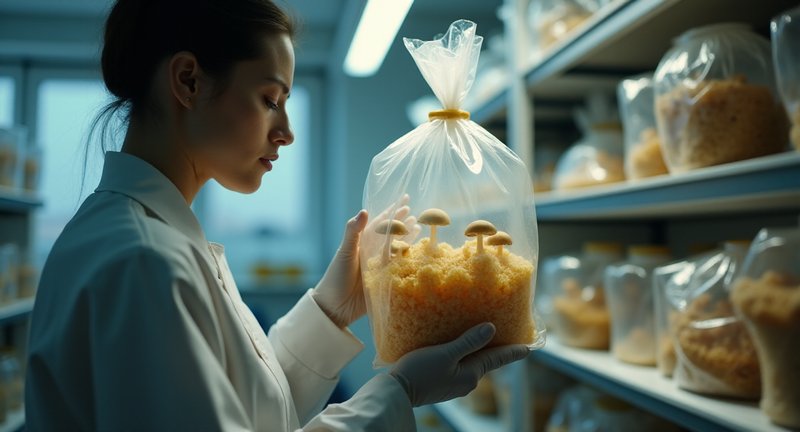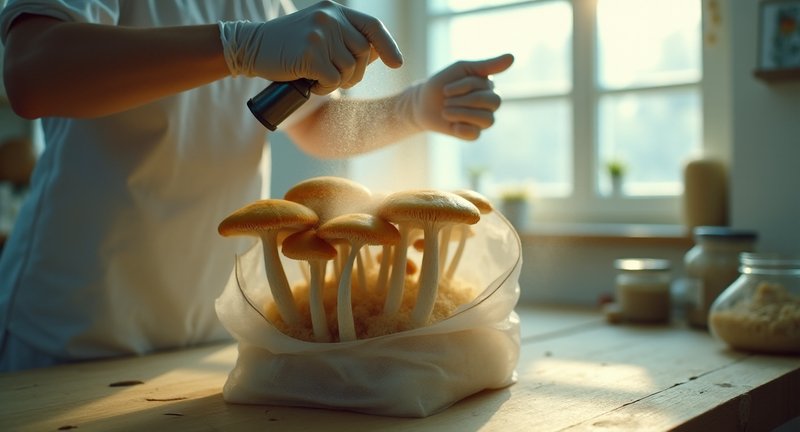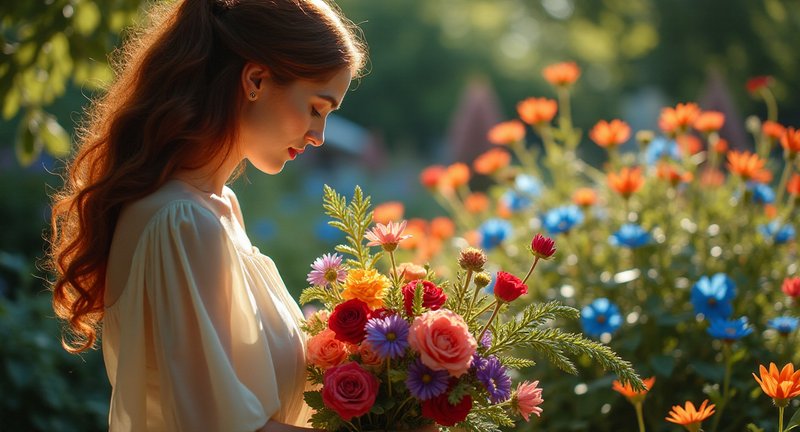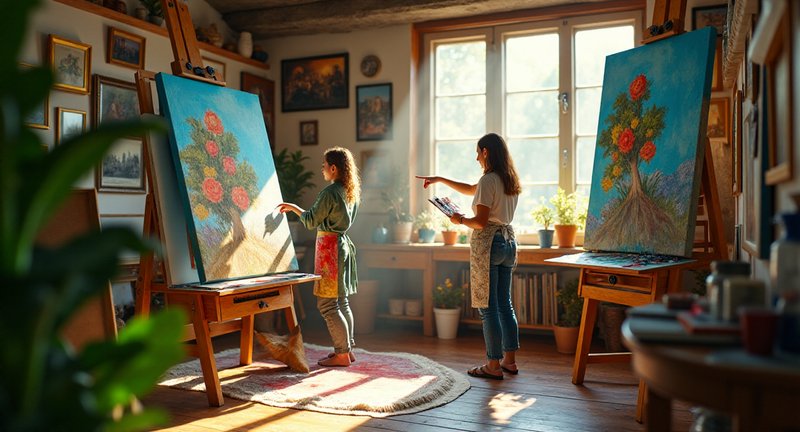The Essentials of Psilocybe Cubensis Grow Bag
In my experience, the Psilocybe Cubensis Grow Bag is like a little treasure chest for mushroom enthusiasts. You get everything you need to cultivate magic without needing a whole lab. It’s like a self-contained ecosystem, just waiting for a spark of life.
You won’t believe how convenient it makes the process. The grow bag is pre-sterilized, meaning you skip the messy part of sterilizing jars and substrates yourself. It’s as if someone handed you a shortcut in mushroom cultivation.
I often think of the grow bag as a cocoon dark and humid, providing the perfect conditions for your fungal friends to flourish. All you need to do is inject the spores, sit back, and let nature do its thing. Watching those first white mycelial strands appear feels like witnessing the birth of a tiny, alien world.

The Mushroom cultivation pouch has transformed how I approach growing mushrooms. It’s not just about ease; it’s about mastering the environment with minimal effort. Honestly, this method is a gateway to deeper experimentation. You’ll find yourself playing with different strains and methods before you know it.
As a grower, there’s something satisfying in the simplicity of it all. A sterile bag, some spores, and a bit of patience that’s the magic formula. You let the bag do its work, like a silent partner in your little operation. It’s low-maintenance but incredibly rewarding, especially for those of us who are always trying to keep things simple but effective.
How to Use a Psilocybe Cubensis Grow Bag
The process of cultivating these unique fungi at home starts with a bag that’s specially prepared for growth. Think of it as a compact ecosystem where everything the mushrooms need to thrive is already neatly arranged.
When you get your bag, the first step is to inspect it. Give it a little check-up, making sure no damage or contaminants have crept in. Once you’re confident it’s good to go, place it somewhere dark and cozy mushrooms love their privacy. I usually opt for a closet or a warm, quiet corner of the house.
Now, here’s the part where patience becomes your best friend. You might feel tempted to peek inside every day, but trust me, give it some space. The magic happens slowly. Over the coming weeks, you’ll notice the mycelium those white, web-like threads creeping through the substrate. This is the signal that your little garden is thriving.

When the first caps begin to appear, it’s honestly quite a thrill. It feels like witnessing a tiny miracle. At this stage, keep the bag humid. Mist the inside lightly, but don’t drench it. Mushrooms are like sponges they love moisture, but too much and they’ll be swimming in it, which is a problem.
As a matter of fact, when they reach maturity, you’ll want to harvest them just as the caps start to open. It’s an exciting moment to gather the fruits of your careful attention, and the cycle will continue if you maintain the conditions right. It’s a rewarding experience almost like taking part in nature’s secret ceremony.
Introduction to Growing Magic Mushrooms
As for growing magic mushrooms, there’s a peculiar sense of patience and wonder involved. For the uninitiated, it might seem like a mystical endeavor. But trust me, once you begin, the process feels like you’re nurturing a secret alchemy, and it doesn’t take long to get hooked.
Before diving in, it’s worth knowing that these fungi aren’t your average houseplants. They require a distinct blend of conditions to thrive, a mixture of precision and nature’s unpredictable charm. Your role is to provide the right environment a sort of caretaking that is almost meditative in its simplicity.
I still remember my first attempt. I had no idea what I was doing. There were many late nights spent squinting at small patches of mycelium, waiting for that first sign of life. And when it finally happened, I was like a proud parent. It’s an art, really, coaxing these little marvels into existence. There’s a bit of magic in watching them grow, knowing that you’ve created the perfect balance of humidity, warmth, and darkness.
Of course, having the right tools makes all the difference. Sure, you could try some complex setups with all the fancy equipment, but there’s something beautiful about starting with the basics. With time, you’ll learn the subtleties, the quirks of the particular strain you’re nurturing.
Patience is the name of the game. Mushrooms have their own rhythm, and trying to rush them just doesn’t work. The reward, though, is worth every quiet moment of anticipation.
What Are Psilocybe Cubensis?
So, what exactly are Psilocybe cubensis? These little fungi are one of the most iconic species of psychedelic mushrooms, often referred to as “magic mushrooms.” Found naturally in tropical climates around the world, they are especially prominent in areas with moist environments like cow pastures and forests. In my own ventures, I’ve seen them pop up in places you wouldn’t expect a hidden corner of a garden, or even under some overlooked brush.
What sets them apart is their potent psychoactive properties, primarily due to compounds like psilocybin and psilocin. When consumed, they have the potential to alter your perception of reality, sparking vivid colors, unusual sounds, and profound introspection. But don’t be fooled; these mushrooms have a rich history too, dating back to ancient ceremonies and spiritual rituals, especially in Mesoamerican cultures.
- Cap Shape: Bell-shaped at first, then becoming more convex or flat as they mature.
- Gills: Dark purple to black when they mature.
- Stem: Long, slender, and white or yellowish, often with a bluish tinge when bruised.
- Spores: Brown to purple-black in color.
To grow them, the conditions must mimic their natural habitat warm, humid, and rich in nutrients. I can tell you from experience, though, it’s not just about the environment; patience plays a huge role. I’ve spent days tweaking the humidity and temperature just to see that first pin poke through the substrate.
Remember, growing these mushrooms requires care and a bit of expertise. They are not your typical garden fungi these are delicate, mysterious organisms with a fascinating life cycle that mirrors their ancient, mystical reputation.
Understanding Grow Bags for Mushroom Cultivation
Grow bags have become a game-changer for mushroom enthusiasts, and trust me, once you get into the groove of using them, you’ll never look back. These little wonders are a perfect sanctuary for nurturing all kinds of fungi, providing them with an environment that’s just right for their mysterious life cycle.
What makes grow bags so appealing is how simple they are to use. Just load them up with your substrate, seal them up, and let nature take over. The design is practically foolproof, with built-in filters that allow for the crucial exchange of gases while keeping contaminants at bay.
They offer great flexibility too. You can scale up or down as needed, whether you’re experimenting with a handful of bags or diving into a full-fledged cultivation project. For those worried about space, they’re a blessing they’re far less cumbersome than tubs or trays and can be easily tucked away until harvest time.
If you’re like me, you’ll appreciate how the transparent material keeps you in the loop on what’s going on inside. You get to witness that magical transformation little mycelial threads winding through the substrate, eventually leading to the formation of fruiting bodies. There’s nothing quite like watching the first pin pop through!
Of course, not all grow bags are created equal. The materials, thickness, and quality of filters can vary, so it’s important to choose bags that are specifically designed for mushroom cultivation. Trust me, cutting corners here can lead to unwanted contamination or weak yields, which can be incredibly frustrating after weeks of patience.
Benefits of Using Specialized Mushroom Bags
From my own experience in mushroom cultivation, using specialized mushroom bags can be a true game changer. These bags offer an environment that makes growing mushrooms a lot more straightforward, even for beginners. The bags come with pre-sterilized substrates, and this alone can save hours of messy work. No more standing over a stove, stirring up substrate mixtures for hours it’s all taken care of for you.
Another thing that I appreciate about these specialized bags is the filtered air exchange. The bags are designed with microporous filters that let just the right amount of air in, while keeping unwanted contaminants out. You won’t have to worry as much about mold or other pesky invaders ruining your hard work.
Here are some key benefits that I’ve noticed:
- Contaminant protection: The specialized filters greatly reduce the chance of unwanted molds and bacteria sneaking into your growing environment.
- Convenience: Everything you need substrate and filter is already built-in. Just inoculate and wait for nature to do its thing.
- Efficient air exchange: Microporous filters ensure that your mushrooms get the airflow they need while still staying protected.
- Compactness: If you’re working with limited space, these bags are a dream. Stackable and neat, they can fit into smaller spaces without much hassle.
- Cost-Effective: If you’re serious about this hobby, these bags are worth every penny. They save you time and money by reducing the risk of contamination and eliminating the need for complex sterilization processes.
Using specialized mushroom bags removes much of the uncertainty, allowing you to focus more on the joy of watching your mushrooms grow, rather than on technical pitfalls.
Essential Materials for Your Grow Setup
When discussing setting up your grow space, it’s like preparing a tiny ecosystem. Whether you’re a complete beginner or have some experience under your belt, gathering the right materials will make the difference between thriving fungi and a disappointing yield. So let’s dive into the essentials you’ll need to get your operation running smoothly.
First up, you’ll want to focus on the grow chamber itself. A dedicated space, like a plastic tub or a clear storage container, works wonders. Think of it as the fungi’s home where the magic happens. You’ll need to create an environment that mimics nature, but with a bit more control.
Next, you’ll need substrate materials, which are basically the food source for your growing fungi. Sterilized rye grain, brown rice flour, or even a mixture of coconut coir and vermiculite, are excellent choices. This is where your fungi will establish themselves, so make sure to choose wisely and ensure everything is sterile cleanliness is key here!
Of course, you can’t forget about the spawning medium. Inoculated grains, ready-made spore syringes, or even liquid cultures can be your go-to. I personally love using spore syringes because they’re reliable and easy to handle, even for a novice.
Don’t skimp on fresh air exchange (FAE) and humidity control. A small fan and a humidity gauge should be on your list. The goal here is to keep a steady level of airflow while maintaining that moisture-rich atmosphere.
As a matter of fact, you’ll need some patience. Fungi aren’t fast growers, and there’s beauty in the waiting process. Trust me, nothing is more satisfying than seeing those little pins pop up after days of careful nurturing.
Preparing the Grow Bag for Use
So, you’ve got your grow bag in hand, but now comes the real fun preparing it for use. Trust me, it’s a simple yet rewarding process. You just need to be patient and precise. Let’s break it down so you can kick off your cultivation journey smoothly.
First off, take a close look at your grow bag. Ensure it’s properly sealed and intact no tears, holes, or faulty seams. Any small breach could invite unwanted guests like contaminants, and you don’t want them crashing the party.
Now, onto the crucial part: prepping the grow bag. I always give it a gentle shake to distribute the substrate evenly. The goal here is to create a cozy environment for your fungi to thrive. Once it looks nice and fluffy, you’ll want to get the bag standing upright, with the substrate layer spread flat and uniform. This ensures a better surface for the next phase of growth.
At this point, you’ll need to open up the air exchange filter if your bag has one. This allows for proper gas exchange, which is critical for the mycelium’s development. No air? No growth. Make sure that filter isn’t clogged or obstructed.
If there’s any humidity imbalance, consider misting the inner sides of the bag lightly. You want moisture, but not too much think of it like baking a perfect cake. Too dry and it won’t rise, too wet and it’ll collapse.
And finally, find a good home for your bag somewhere out of direct sunlight but warm enough to encourage growth. Ideal temperatures vary, but typically, you want a nice cozy range, similar to a warm room in your house. Now, all you need is a bit of patience, and soon enough, you’ll witness the magic unfold!
Inoculation Techniques for Effective Growth
In my journey through the fascinating world of mycology, I’ve learned that inoculation techniques are crucial for achieving robust growth. It’s like planting a seed; the right nurturing can lead to an incredible bloom, while neglect can yield nothing but disappointment.
First, let’s talk about the essence of sterilization. I’ve often found that the most effective growth starts with a clean slate. Whether you’re working with grain or substrate, ensuring everything is pristine will help foster that magical mycelial network.
Next comes the actual inoculation. I remember the first time I injected spores into a substrate. It felt like I was orchestrating a tiny symphony, each drop a note contributing to a grand performance. The key here is to be gentle yet deliberate, allowing the spores to find their new home without disrupting the surrounding environment too much.
Temperature and humidity play a vital role as well. Think of your growing area as a cozy haven, a sanctuary where your spores can flourish. I always make sure to maintain the right balance; too hot or too cold can spell disaster.
Patience is your best friend in this process. I can still feel the anticipation as I waited for those first signs of growth. It’s a delicate dance, and sometimes, the best things take time to emerge from the shadows.
Also, remember to keep a keen eye on your project. Regular monitoring allows you to catch any signs of trouble early. Each step, from inoculation to harvest, is a chance to learn and refine your skills.
Ideal Conditions for Mushroom Growth
As it relates to cultivating mushrooms, finding the right conditions is like striking the perfect chord in music. The harmony between temperature, humidity, and light can be the difference between a thriving mycelium network and a failed crop. Trust me, after spending countless hours observing, tweaking, and experimenting, I’ve learned that mushrooms are a bit like picky houseplants – except they grow in the dark and won’t forgive you easily.
Let me tell you, Psilocybe Cubensis is one of those mushroom species that requires a bit more attention, but once you get the conditions right, the results are nothing short of magical. Temperature is key here – a cozy range of 75 to 80 degrees Fahrenheit makes them feel right at home. However, if it gets too hot, things can get sticky fast, literally. Mushrooms don’t enjoy sweating any more than we do.
Humidity, though, that’s the sweet spot. Aim for around 90% to 95%, and your fungi will be happy campers. You see, they love the moist air but don’t appreciate sitting in soggy conditions. That’s why using a Psilocybe Cubensis Grow Bag is such a game changer. It simplifies the process, balancing moisture and airflow, while keeping everything contained in a neat, sterile environment. A little bonus: fewer surprises from rogue contaminants.
Lighting doesn’t need to be intense. In fact, indirect or ambient light works wonders. Think of it as setting the mood – too bright, and they shy away; too dark, and they’ll get lost. It’s this balance that makes mushroom growing so intriguing, always a puzzle waiting to be solved.
The Definitive Guide to Psilocybe Cubensis Grow Bag
When I first revealed the enchanting world of mushroom cultivation, I stumbled upon a treasure trove of opportunities. One of the most effective methods for growing these fascinating fungi involves specialized cultivation containers. Here, I want to share my insights and experiences to help you navigate this rewarding hobby.

Why Choose a Specialized Cultivation Container?
- Contamination Control: These bags are designed to minimize exposure to contaminants. This is essential in ensuring that your mycelium thrives without competition from unwanted microorganisms.
- Optimal Environment: The structure of these bags provides a humid and warm environment that is perfect for mushroom growth. It’s like creating a cozy little ecosystem right in your home.
- Ease of Use: For beginners, using a pre-sterilized bag simplifies the process. You can dive into cultivation without the overwhelming need for advanced techniques or equipment.
Key Considerations for Successful Cultivation:
- Quality of Materials: Always opt for high-quality substrates. The success of your harvest largely depends on what you feed your mycelium.
- Temperature and Humidity: Maintaining the right conditions is crucial. Too dry or too humid can lead to disaster. Invest in a thermometer and hygrometer for best results.
- Patience is Key: It might feel like an eternity waiting for those little beauties to sprout, but patience pays off. Keep your excitement in check and let nature do its thing.
In my journey, I’ve learned that cultivating mushrooms is not just about the end result; it’s about embracing the process. Each step teaches you something new and deepens your connection with nature. So, roll up your sleeves and embark on this magical adventure!
Monitoring Temperature and Humidity Levels
Monitoring temperature and humidity levels is akin to becoming a maestro in the delicate symphony of growth. Let me tell you, keeping an eye on these two crucial elements can make all the difference between a flourishing habitat and a flop. From my experience, understanding the nuances of your environment is where the magic happens.
Why Temperature and Humidity Matter
-
Temperature:
- The sweet spot for many fungi tends to hover around 75degF to 80degF (24degC to 27degC). Too cold, and you’ll stifle their growth; too hot, and you risk drying them out or even killing them.
- Pay attention to those subtle shifts! A single degree can affect metabolic rates significantly.
-
Humidity:
- A humidity level of 85% to 95% is generally ideal. Imagine a sauna for your fungi moist, warm, and just right.
- Use a hygrometer to keep track of moisture levels, ensuring they don’t slip through your fingers like sand.
Tips for Effective Monitoring:
-
Invest in Digital Sensors: These gadgets can provide real-time data, eliminating the guesswork. I personally use a dual sensor for both temperature and humidity, which offers peace of mind.
-
Create a Routine: Make it a habit to check your levels daily. The more consistent you are, the more you’ll understand your environment’s rhythm.
-
Adjust Accordingly: If levels are off, don’t hesitate to modify your setup. A simple fan or humidifier can be the difference between thriving and merely surviving.
-
Keep a Journal: Document your findings and adjustments. It’s not only rewarding but also helps in spotting trends over time.
Monitoring these levels is not just about maintaining numbers; it’s about cultivating a thriving ecosystem that reflects the care you put into it. Happy growing!
Identifying and Managing Contaminants
When venturing into the captivating world of cultivating fungi, one of the most critical aspects I learned is identifying and managing contaminants. Trust me, this is not just a minor detail it’s the difference between a flourishing crop and a heartbreaking failure. Contaminants can sneak in like uninvited guests at a party, and knowing how to deal with them is essential.
Here’s what I’ve discovered through my hands-on adventures:
-
Common Contaminants:
- Molds – Green, white, or black fuzz can signal trouble.
- Bacteria – Slimy patches or foul odors often indicate bacterial invaders.
- Pests – Little critters can wreak havoc on your precious mycelium.
-
Identifying Contaminants:
- Visual Inspection – Regularly check your substrates for any unexpected growth.
- Smell Test – A fresh, earthy scent is good; anything sour or rotten is bad news.
- Texture Check – Feel for any unusual slickness or a dry, cracked surface.
-
Management Strategies:
- Sterilization is Key – Use pressure cookers or autoclaves to ensure everything is clean.
- Proper Airflow – Invest in good ventilation to prevent stagnant air that breeds bacteria.
- Isolation – If you spot a contaminant, isolate the affected bags immediately to prevent the spread.
From my experience, patience and vigilance are paramount. Each grow session brings its unique challenges, but embracing them as learning opportunities makes the journey worthwhile. Remember, even seasoned cultivators encounter hiccups; it’s all part of the enchanting rollercoaster that is mushroom cultivation.
So, arm yourself with knowledge and dive into this remarkable hobby, but keep an eye out for those sneaky invaders!
Harvesting Techniques for Maximum Yield
As it relates to harvesting techniques for maximum yield, the joy is in the details. After years of experimenting with different methods, I’ve discovered some quirky yet effective strategies that can transform your crop from modest to magnificent. Here’s what I’ve learned along the way:
Timing is Everything
- Observe the caps: The moment those caps begin to unfurl is your cue. Waiting too long may lead to spore release, which can affect your next harvest.
- Morning magic: Harvesting in the early hours when humidity is high can enhance flavor and potency.
Gentle Handling
- Twist, don’t pull: Gently twisting the mushrooms at the base will ensure you don’t damage the mycelium. Think of it as coaxing them rather than yanking them from the soil.
- Use a clean knife: If twisting isn’t your style, a clean, sharp knife can minimize trauma to the mycelium network.
Post-Harvest Care
- Air dry or dehydrate: Once harvested, lay them out in a cool, dark place to air dry. For those who want to speed up the process, a dehydrator can be a lifesaver.
- Store wisely: Keep your dried mushrooms in airtight containers, preferably in a dark, cool spot to preserve their magic.
Record Keeping
- Keep a journal: Tracking your harvest yields and conditions can provide invaluable insights for future grows. I can’t stress enough how much my journal has helped me fine-tune my techniques!
These approaches not only boost your yield but also enhance the overall quality of your harvest. So, gear up, take your time, and let nature’s bounty surprise you!
Post-Harvest Care and Storage
After the thrilling adventure of harvesting your mushrooms, you might feel a rush of triumph, but don’t let that excitement overshadow the vital steps of post-harvest care and storage. In my experience, the journey doesn’t end at the pick; it’s just the beginning of preserving those delicate treasures for future enjoyment.
Steps for Effective :
-
Cleanliness is Key:
- Gently clean your mushrooms with a soft brush or cloth to remove any residual substrate or dirt. Remember, they’re like the divas of the kitchen too much handling can bruise them.
-
Drying Techniques:
- Air Drying: Place your mushrooms in a cool, dark place on a drying rack. A fan can expedite the process.
- Dehydrator: If you have one, this can be a game changer for preserving mushrooms while keeping their flavors intact.
- Oven Drying: Set the oven to the lowest temperature and prop the door open slightly. This method works in a pinch but requires close supervision to prevent cooking the mushrooms.
-
Storage Solutions:
- Airtight Containers: Store your dried mushrooms in glass jars or vacuum-sealed bags to keep moisture at bay. I prefer using dark glass to block out light, which can degrade quality over time.
- Cool and Dark: Keep your containers in a cool, dark pantry or cupboard. Remember, heat and light are the enemies here!
-
Labeling: Don’t skip this! Write the harvest date and type of mushroom on your storage containers. Trust me, when you’re in the mood for a culinary adventure months later, you’ll thank your past self.
-
Regular Checks: Periodically check your stored mushrooms for any signs of moisture or spoilage. It’s like a little treasure hunt every now and then!
By embracing these simple yet effective post-harvest care techniques, you can ensure that your mushroom bounty remains fresh, flavorful, and ready to elevate your dishes long after the harvest.
Q&A Corner
How much do mushroom grow bags yield?
The yield from mushroom grow bags can vary significantly based on several factors, including the type of mushroom, the size of the bag, and the cultivation conditions. On average, a well-maintained grow bag can produce anywhere from 1 to 3 pounds of mushrooms per bag over several flushes. For example, popular species like oyster mushrooms can yield around 1.5 to 2 pounds per bag, while others like shiitake may yield slightly less. Consistent temperature, humidity, and proper harvesting techniques can enhance these yields.
How long does an all-in-one mushroom grow bag take?
An all-in-one mushroom grow bag typically takes about 2 to 4 weeks from inoculation to the first flush of mushrooms. This timeline can depend on the mushroom species and environmental conditions such as temperature and humidity. For instance, oyster mushrooms tend to colonize faster than species like lion’s mane. After the initial colonization period, it usually takes another week or two for the mushrooms to fully mature and be ready for harvest, leading to an overall timeframe of around 3 to 6 weeks.
Where is the best place to put mushroom grow bags?
The best place to put mushroom grow bags is in a clean, dark, and humid environment, ideally with temperatures that suit the specific mushroom species you are growing. A basement, garage, or dedicated mushroom growing space works well, as they can be kept free from direct sunlight, which can dry out the bags. Additionally, ensure good air circulation to prevent mold while maintaining humidity levels. For fruiting, transferring the bags to a cooler, more humid area with indirect light can encourage healthy mushroom development.
How do you inject mushroom grow bags?
Injecting mushroom grow bags is a critical step in the inoculation process. First, sterilize the injection site and your syringe needle with alcohol to prevent contamination. Then, insert the needle through the self-healing injection port on the bag, allowing the spore solution or liquid culture to be injected into the substrate. Aim to inject about 1-2 ml of the solution, ensuring the needle reaches the inner substrate but does not go too deep. After injecting, gently shake the bag to help distribute the spores throughout the substrate.
Should I shake my mushroom grow bag?
Yes, shaking your mushroom grow bag can be beneficial during the colonization phase. Shaking helps distribute the mycelium throughout the substrate, promoting faster and more even colonization. It’s best to shake the bag gently a few days after inoculation, once the mycelium starts to show signs of growth. However, be cautious not to shake it too vigorously, as this can damage the developing mycelium. Generally, avoid shaking during the fruiting phase, as this can disrupt the delicate balance needed for mushroom formation.
Do mushroom growers make good money?
Mushroom growers can make a good income, depending on the scale of their operation and market demand. Small-scale growers often sell directly to consumers or local markets, with the potential to earn a significant profit margin, especially for specialty mushrooms like shiitake or oyster. Commercial operations can achieve higher yields and profits, but they also involve larger investments and risks. Overall, profitability is influenced by factors such as production costs, pricing, and the grower’s marketing strategies, making it feasible to earn a decent living in this field.
What is the best temperature for cubensis mycelium growth?
The best temperature for Psilocybe cubensis mycelium growth is typically between 75degF to 80degF (24degC to 27degC). Within this range, the mycelium can colonize the substrate effectively and thrive. However, it’s essential to avoid temperatures exceeding 82degF (28degC), as higher temperatures can stress the mycelium and hinder growth. During the fruiting phase, a slight drop in temperature to around 70degF to 75degF (21degC to 24degC) can help initiate mushroom formation, making temperature management crucial throughout the cultivation process.
How do I get the most out of my mushroom grow kit?
To maximize your yields from a mushroom grow kit, start by carefully following the instructions provided with the kit. Ensure that you maintain optimal conditions, including temperature, humidity, and airflow. Proper watering is also essential mist the kit as recommended to keep it moist but not overly wet. Additionally, monitor for any signs of contamination and harvest mushrooms promptly when they reach maturity. You can often get multiple flushes from a single kit, so be patient and give the substrate time to recover after each harvest.
How many times can you use a grow bag?
Generally, mushroom grow bags are designed for one-time use. After the initial flush of mushrooms, the substrate can become depleted of nutrients, making it less effective for subsequent crops. However, some growers experiment with reusing bags by adding fresh substrate or transferring mycelium to a new grow bag. If you decide to reuse a bag, ensure that it is thoroughly cleaned and sterilized to prevent contamination. Most commercial growers find that starting with new bags each cycle yields the best results and ensures a healthy crop.
How much can a mushroom farm yield?
The yield of a mushroom farm can vary widely based on the type of mushrooms being grown, the farming techniques used, and the size of the operation. On average, a well-managed mushroom farm can produce between 1,000 to 1,500 pounds of mushrooms per week per 1,000 square feet of growing space. High-density systems, such as vertical farms, can increase yields significantly. For specialty mushrooms like gourmet varieties, the profits can be even higher, making mushroom farming a potentially lucrative agricultural venture with proper management.
Do mushroom grow bags work?
Yes, mushroom grow bags are an effective and popular method for cultivating mushrooms. They provide a controlled environment that promotes healthy mycelium growth and fruiting. The bags are pre-sterilized and filled with a nutrient-rich substrate, allowing for a clean and efficient growing process. Many growers report successful yields using these bags, as they simplify the growing process and reduce the risk of contamination. With proper care and conditions, mushroom grow bags can yield abundant harvests, making them an excellent choice for both beginners and experienced cultivators.











Wow, I completely resonate with your analogy about mushroom cultivation being like creating music! It’s so true that finding the perfect balance of temperature, humidity, and light feels like tuning an instrument. I’ve had my fair share of trials and errors too, especially with Psilocybe Cubensis. Once, I got the humidity way too high, and I ended up with a mold disaster instead of mushrooms definitely a lesson learned! I also appreciate your tip about using grow bags; they really do take the hassle out of maintaining a sterile environment. I think it’s fascinating how these little fungi can be so finicky yet rewarding at the same time. I’ve found that incorporating gentle indirect light has really helped my yields. It’s like they thrive on a little pampering! Thanks for sharing your insights; it makes the whole growing process feel more like a rewarding journey rather than a chore. Can’t wait to apply your advice and see where my next batch takes me!
Oh, I can totally relate to that feeling of inoculation being like conducting a tiny symphony! It’s such a precise process, and yet there’s something kind of magical about it. The first time I did it, I was so nervous about messing it up, but like you said, patience is key. I’ve definitely learned the hard way that skipping proper sterilization can ruin the whole batch. The sterilization tip is a must-do if you want strong growth. Keeping a close eye on temperature and humidity has been a game-changer for me too; it’s amazing how those small adjustments can make a world of difference. And yeah, waiting for those first signs of life is so nerve-wracking but exciting at the same time. This really is such a rewarding process, and every grow is a chance to improve. Thanks for sharing these insights!
Haha, love the cake comparison too much moisture and everything goes south! That’s honestly been one of my biggest learning curves with the grow bags. I’ve definitely been guilty of over-misting in the past, so it’s great to see someone spell it out clearly. The air exchange filter tip is also super helpful; I never realized how crucial that was until I had a bag that wasn’t getting enough air, and let’s just say it didn’t end well. It’s these little details that can make or break a grow! The warmth tip is gold too I had mine too close to a window last time and didn’t realize how much light it was getting. The whole process feels like a balancing act between providing the right conditions and not overdoing it, but that’s part of the fun, right? This guide is definitely making me feel more confident about my next attempt. I’m ready for some magic to unfold!
Oh man, this breakdown is perfect! It really does feel like setting up a mini ecosystem, and I love how you compared it to giving the fungi a home. The part about the substrate materials is super helpful; I’ve been stuck deciding between rye grain and brown rice flour, but I might just give coconut coir and vermiculite a try. I had no idea spore syringes were so beginner-friendly either! I’ll definitely be adding them to my list for my next grow. And that reminder about fresh air exchange and humidity so spot on. It’s so easy to forget about airflow, but it’s definitely key to success. Anyway, I love how you described the waiting process as part of the beauty. It’s like gardening, but even more rewarding when those little pins finally show up! Thanks for the awesome tips!
Specialized mushroom bags really are a game changer! I love how they eliminate a lot of the messy work and uncertainty that comes with traditional growing methods. When I first started, the convenience was a lifesaver. No more standing over a stove for hours trying to get the substrate just right the pre-sterilized bags make it so much easier. I also love that they help with contamination control. The filters are incredibly effective, and that peace of mind is worth every penny. For someone tight on space like me, the compactness is a huge bonus too!
I couldn’t agree more about grow bags being a game-changer! I’ve been using them for a while now, and the ease they offer is unreal. Being able to just load up the substrate and let nature take over has taken so much stress out of my process. I’ve had the same experience with watching that first pin pop through it’s like magic every single time. I also learned the hard way about bag quality; cheap bags led to a contamination disaster for me once, so I’ve since made sure to invest in better materials. Trust me, it’s worth it!
I had no idea Psilocybe cubensis had such a rich history! It’s fascinating that they’ve been used in ancient rituals and still hold such mystical properties today. I’ve always been intrigued by how something so small can have such a profound impact on perception. You’re absolutely right about the patience needed for growing them I tried once, and it took me a while to get the conditions just right. The bluish tinge when they’re bruised is something I find so unique too. Definitely not your average fungi!
Reading this brought me back to my first time growing magic mushrooms! I had no idea what I was doing either, and I remember constantly checking on them like an overly worried parent, haha. You hit the nail on the head it’s like a secret alchemy. There’s something so rewarding in creating the perfect environment and just watching them grow at their own pace. It definitely teaches patience, but that anticipation just makes the first signs of life even more exciting. I agree that having the right tools helps a lot, but there’s something really satisfying about mastering the basics before diving into more complex setups. It’s almost meditative, and there’s a real sense of accomplishment when you get it right. Watching the mycelium take over the substrate, then seeing the mushrooms pop up, it feels like you’re part of a fascinating natural process. Plus, that quiet satisfaction when it all comes together is unbeatable!
I love the way you described the whole cultivation process here! It’s such a careful balance of science and nature, and your tips about checking the bag for contaminants before starting are spot-on. I’ve made the mistake of not inspecting things closely enough before, and it definitely derailed my little operation. Also, the advice about not peeking inside too often? Yes! That’s always the hardest part for me. It’s like I know I shouldn’t, but I just can’t help it it’s so tempting! But you’re right, patience really does pay off. When those first caps appear, it feels like a little victory every time. And keeping the humidity just right is key misting lightly is such a simple but crucial tip. I also agree that the harvest moment is exciting, almost ceremonial. There’s something really special about taking part in this tiny ecosystem you’ve created and nurtured. It feels like you’re participating in something bigger than just growing mushrooms!
Wow, this post really captures the magic of mushroom cultivation! I’ve been using the Psilocybe Cubensis Grow Bag myself, and it’s honestly such a game-changer. The ease of having a pre-sterilized setup saves so much hassle. It’s like they’ve taken out all the tricky parts and left you with just the fun of watching those little mycelium threads start to spread. I remember being blown away the first time I saw that white fuzz appear, and you’re right it’s like seeing a whole new world come to life! It’s so satisfying to know that all you really need is patience and the bag does the rest. I’ve definitely started experimenting with other strains, too, since the process is so straightforward. Honestly, couldn’t agree more it’s simple, effective, and really rewarding!